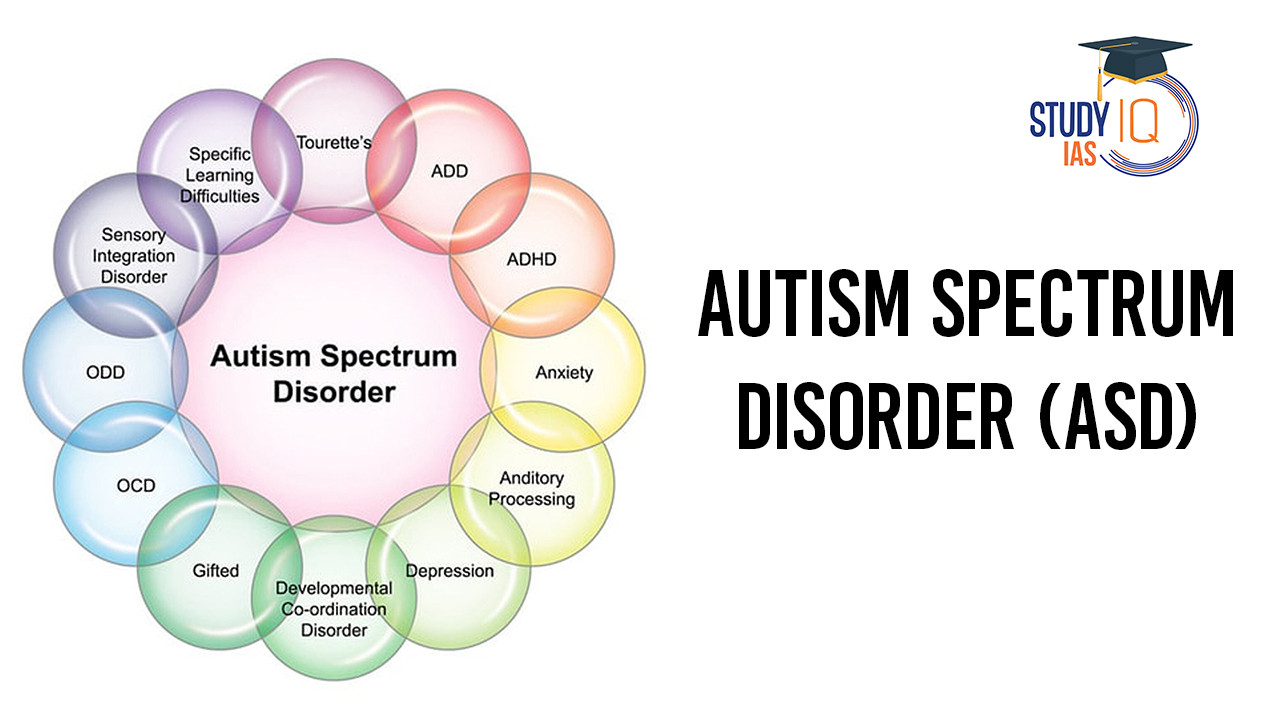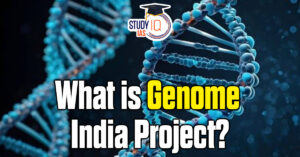Table of Contents
Autism Spectrum Disorder (ASD) is a complex neurodevelopmental condition that affects social interaction, communication, behaviour, and sensory processing. It is characterized by a wide range of symptoms and levels of impairment, which is why it’s called a “spectrum” disorder. ASD typically becomes apparent in early childhood, and its severity can vary significantly from one individual to another.
What is Autism?
Autism, or Autism Spectrum Disorder (ASD), is a complex neurodevelopmental condition characterized by challenges in social interaction, communication, behavior, and sensory processing. These difficulties often become evident in early childhood, with symptoms varying widely in type and severity, thus defining it as a “spectrum” disorder.
Individuals with autism may struggle with understanding social cues, exhibit repetitive behaviors, and have unique sensory sensitivities. It transcends gender, race, and ethnicity, affecting diverse populations. While there is no cure for autism, early interventions, therapies, and support services can greatly improve an individual’s quality of life and functioning, emphasizing their unique strengths and needs.
We’re now on WhatsApp. Click to Join
Causes of Autism Spectrum Disorder
The exact causes of Autism Spectrum Disorder (ASD) are still not fully understood, and it is likely that a combination of genetic and environmental factors contribute to its development. Here are some of the key factors that have been studied in relation to the causes of ASD:
- Genetic Factors: Research indicates that genetics play a significant role in the development of ASD. It is more common in families with a history of the disorder. Certain gene mutations and variations have been associated with an increased risk of ASD.
- Environmental Factors: There is ongoing research into the role of environmental factors, such as prenatal exposure to certain chemicals or infections, in the development of ASD. However, the specific environmental triggers are not yet well-defined.
- Brain Development: Abnormalities in brain development have been observed in some individuals with ASD. These developmental differences can affect neural connectivity and may contribute to the characteristic symptoms of ASD.
- Advanced Parental Age: Some studies have suggested that children born to older parents may have a slightly higher risk of developing ASD. However, this risk increase is relatively small.
- Immune System Factors: There is ongoing research into the role of the immune system in the development of ASD. Immune system dysfunction during pregnancy or early childhood has been explored as a potential contributing factor.
Autism Spectrum Disorder (ASD) Diagnosis
Diagnosing Autism Spectrum Disorder (ASD) involves a thorough and multidisciplinary process. It typically begins with early screening during routine check-ups to identify potential concerns. If screening raises suspicions, a comprehensive evaluation follows, encompassing interviews with parents or caregivers and direct assessments of the individual’s behavior, communication, and developmental milestones.
This assessment is guided by specific diagnostic criteria outlined in the DSM-5. A team of professionals, including speech and occupational therapists, may be involved. Diagnostic tools like the ADOS and ADI-R may aid the process. It’s essential to rule out other conditions with similar symptoms. Early diagnosis enables timely intervention and tailored support for individuals with ASD.
Autism Spectrum Disorder Symptoms
- Social Communication/Interaction Behaviors
-
- Limited or inconsistent eye contact.
- Lack of responsiveness to verbal cues, like their name.
- Challenges in maintaining reciprocal conversations.
- A tendency to focus extensively on specific interests, often to the exclusion of others.
- Use of facial expressions and gestures that don’t align with their speech.
- Difficulty in understanding others’ perspectives and actions.
- Struggles adapting behavior to social contexts.
- Limited engagement in imaginative play and forming friendships.
- Restrictive/Repetitive Behaviors
-
- Repeating actions or echoing words and phrases (echolalia).
- Intense, narrow interests with a focus on details.
- Strong fixation on specific objects or their parts.
- Discomfort with routine changes and transitions.
- Sensory sensitivity variations.
- Sleep problems and irritability.
- Strengths
-
- Detailed learning and long-term information retention.
- Strong visual and auditory learning abilities.
- Excellence in subjects like math, science, music, or art.
Autism Spectrum Disorder Treatment
The treatment and management of Autism Spectrum Disorder (ASD) typically involve a multidisciplinary approach tailored to the individual’s specific needs and strengths. While there is no cure for ASD, various interventions and therapies can help improve functioning and quality of life for individuals with ASD. Here are some key components of ASD treatment:
- Behavioral Interventions: Applied Behavior Analysis (ABA) is a widely used approach that focuses on shaping and modifying behaviors. It can help individuals with ASD acquire new skills, reduce problem behaviors, and improve communication.
- Speech and Language Therapy: This therapy assists individuals in developing effective communication skills, including speech, language, and nonverbal communication (e.g., gestures and sign language).
- Occupational Therapy: Occupational therapists work on improving fine motor skills, sensory integration, and daily living skills. This can help individuals with ASD become more independent in their daily activities.
- Social Skills Training: These interventions aim to enhance social interaction, improve understanding of social cues, and foster the development of friendships and relationships.
- Educational Support: Individualized Education Plans (IEPs) are created to address the educational needs of children with ASD. Special education programs and classroom accommodations can be implemented to support learning.
- Medications: In some cases, medication may be prescribed to manage specific symptoms or co-occurring conditions, such as anxiety, depression, or attention deficits. Medication decisions should be made in consultation with a healthcare provider.
- Sensory Integration Therapy: This therapy helps individuals with sensory sensitivities to better tolerate and process sensory input, making everyday activities more manageable.
- Parent and Caregiver Training: Education and training for parents and caregivers are essential to provide ongoing support and help individuals with ASD reach their full potential.
- Alternative and Complementary Therapies: Some families explore alternative treatments like dietary interventions, music therapy, or animal-assisted therapy. It’s crucial to consult with healthcare professionals before pursuing these options.
- Early Intervention: Starting interventions as early as possible is critical for maximizing outcomes. Early identification and treatment can lead to significant improvements in a child’s development.
- Adult Services: Transitioning into adulthood, individuals with ASD may require continued support in areas like employment, independent living, and social integration.
Each individual with ASD is unique, and their treatment plan should be customized to address their specific needs, strengths, and challenges. Regular assessment and adjustment of interventions are essential to ensure progress and a better quality of life.
Autism Spectrum Disorder in Adults
Autism Spectrum Disorder (ASD) is not limited to childhood; it continues to affect individuals throughout their adult lives. While the characteristics and needs of adults with ASD can vary widely, here are some key considerations regarding ASD in adults:
- Late Diagnosis: Some adults receive ASD diagnoses later in life, potentially after experiencing unrecognized symptoms during childhood.
- Employment Challenges: Finding and maintaining jobs can be difficult, with varying abilities and support needs.
- Independent Living: Daily life skills, like budgeting and housekeeping, may require assistance.
- Social Relationships: Building and maintaining friendships can be challenging, necessitating social skills training and support groups.
- Mental Health: Co-occurring conditions like anxiety and depression are common and require attention.
- Healthcare Access: Navigating healthcare services can be problematic, demanding provider awareness of communication preferences.
- Community Support: Vocational training, housing aid, and day programs are often crucial.
- Legal and Financial Considerations: Legal and financial planning may be needed for long-term well-being.
- Aging with ASD: Needs change with age, necessitating continuous assessment and support plan adjustments.
- Leveraging Strengths: Many adults with ASD have unique talents and strengths that can be utilized in various life pursuits.
High-Functioning Autism Spectrum Disorder
High-Functioning Autism Spectrum Disorder (HF-ASD) characterizes individuals with autism who possess relatively average or above-average intellectual and language abilities. They may exhibit milder challenges in social interactions, communication, and repetitive behaviors compared to those with more severe forms of autism. Individuals with HF-ASD often desire social engagement but can struggle with reading social cues and forming relationships.
While their language skills may be strong, pragmatic language and nonverbal communication can be challenging. They may also experience sensory sensitivities. Many excel in specific areas but may need support in daily life, education, and employment while co-occurring mental health conditions are not uncommon.
Autism Awareness
Autism Awareness focuses on increasing public understanding of Autism Spectrum Disorder (ASD). It emphasizes educating people about the characteristics of ASD, advocating for early diagnosis and intervention, and promoting acceptance and inclusion of individuals with autism. The goal is to create a more supportive and accessible environment, ensuring that those with ASD and their families receive the assistance and respect they deserve. Autism Awareness Month in April is a prominent occasion for these efforts, but the mission continues year-round.


 Silicon Photonics Enables Low-power AI A...
Silicon Photonics Enables Low-power AI A...
 Genome India Project (GIP), Aim and Sign...
Genome India Project (GIP), Aim and Sign...
 Biomass Satellite, Key Objectives and Pa...
Biomass Satellite, Key Objectives and Pa...





















